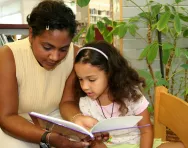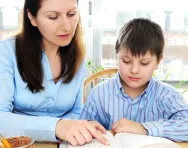Important update from TheSchoolRun
For the past 13 years, TheSchoolRun has been run by a small team of mums working from home, dedicated to providing quality educational resources to primary school parents. Unfortunately, rising supplier costs and falling revenue have made it impossible for us to continue operating, and we’ve had to make the difficult decision to close. The good news: We’ve arranged for another educational provider to take over many of our resources. These will be hosted on a new portal, where the content will be updated and expanded to support your child’s learning.
What this means for subscribers:
- Your subscription is still active, and for now, you can keep using the website as normal — just log in with your usual details to access all our articles and resources*.
- In a few months, all resources will move to the new portal. You’ll continue to have access there until your subscription ends. We’ll send you full details nearer the time.
- As a thank you for your support, we’ll also be sending you 16 primary school eBooks (worth £108.84) to download and keep.
A few changes to be aware of:
- The Learning Journey weekly email has ended, but your child’s plan will still be updated on your dashboard each Monday. Just log in to see the recommended worksheets.
- The 11+ weekly emails have now ended. We sent you all the remaining emails in the series at the end of March — please check your inbox (and spam folder) if you haven’t seen them. You can also follow the full programme here: 11+ Learning Journey.
If you have any questions, please contact us at [email protected]. Thank you for being part of our journey it’s been a privilege to support your family’s learning.
*If you need to reset your password, it will still work as usual. Please check your spam folder if the reset email doesn’t appear in your inbox.
Supporting your child's language-learning at home

With primary languages now compulsory for KS2 children, it’s important to keep things interesting and fun. But helping your child with their language homework – and even keeping up their enthusiasm for languages – can be difficult if you don't speak it yourself.


Start a unique learning programme!
- Weekly programme for each school year
- Worksheets sent direct to your inbox
- Keeps your child's learning on track
We asked language expert Catherine Cheater of the Association for Language Learning and Marianne Allen, headteacher of Springfield Lower School, Bedford and winner of the Primary Languages in the Classroom Award, to share their tips on bringing languages to life at home as well as school.
1 Be positive and encouraging
'Try to make the experience fun,' says Catherine. 'The teacher will work on the finer points of pronunciation and spelling, but encourage your child to have a go, practising what they learnt in class. This could be reading aloud or copying vocabulary.'
You'll find some free interactive language games, which celebrate the beauty of words and languages, on the World of Languages website.
2 Ask the school to share its curriculum
'More and more schools are putting details of the languages curriculum on their website,' Catherine explains. 'This usually outlines the type of learning that will take place in each year group. In addition, most schools send letters home at the start of each half term, outlining the themes and topics that will be covered.' Finding out about what your child will be learning at school will help you to support them at home: for example, by looking up key words or researching useful websites.
3 Buy colourful picture books
'There are so many books available these days which help children with language-learning,' says Marianne. 'The European Bookshop in London has some beautiful books. Usborne Books has picture books in many languages, with online links for pronunciation guidance, and some include colouring and stickers. Associating a word with a picture is a good way to make it stick in a child’s mind, but whatever you buy, make sure the pictures and words are clear and easy to read.' It's a good idea to run your choice past your child's teacher first, to make sure it's at the right level for their understanding.
Dual-language picture books and eBooks are also available: Mantra Lingua offers a number of stories in English and up to 25 other languages, as well as the PENpal, a device which brings dual-language audio to every page, reading the words in English, French, Polish, Arabic and many more.
4 Look out for audio and video resources
'Language lessons often focus around the appreciation of songs, stories, poems and finger rhymes,' says Catherine. 'These can often be found on CD or DVD, or on internet sources such as YouTube. Ask your child’s teacher for particular titles or ideas.'
Les Puces offers French-English bilingual books, songs, audio books, learning subscriptions and Zoom classes, as well as expert guidance on how to support your child's language learning at home.
5 Listen to language clips
'Some parents worry that they can’t help their child practise pronunciation if they don’t speak the language themselves,' explains Marianne. 'Don’t let this put you off! You can ask the school to publish clips of the spoken language on their website to provide a virtual learning environment so you can learn too. Some schools even offer taster classes for parents.'
6 Pick up resources on holiday
Going on holiday to the country whose language your child is learning is a great way to immerse them in the language and culture, and gives you a chance to stock up on resources. 'The best language materials for home use are often authentic resources that can be found in the country itself,' says Catherine. 'Look out for books and audio resources you can buy, but also collect comics, leaflets, newspapers, tickets, food packaging or anything with bright pictures and foreign words.'
7 Read a familar story
Reading stories that your child knows well in the foreign language will give their vocabulary and comprehension a big boost. 'You can find these online, in bookshops, and often in libraries too,' Marianne explains. 'If it’s a familiar story, children can pick out the main words. Or you can find bilingual books and work out the meaning together.'
8 Follow the instructions!
'Written language homework tasks have usually been well prepared in class,' Catherine says. 'Ask your child if they have been given any templates, frames or word banks and encourage them to follow these to help structure the work.' Buying a simple, child-friendly foreign language dictionary will also help them to overcome any hurdles.
9 Tackle homework issues
'If you feel your child is lagging behind and you can’t do the homework yourself, do something positive!' Marianne advises. 'You can ask the school for suggestions, and it’s always worth asking around to see if other children may be finding things hard, too. But you could also find a parent who speaks the language and enlist their support. You could even get a group of parents together and do the homework together.'
10 Celebrate your child’s success
'End-of-term events and class assemblies often include foreign language items,' Catherine explains. 'Be sure to go along and see your child perform, and celebrate their success.'








